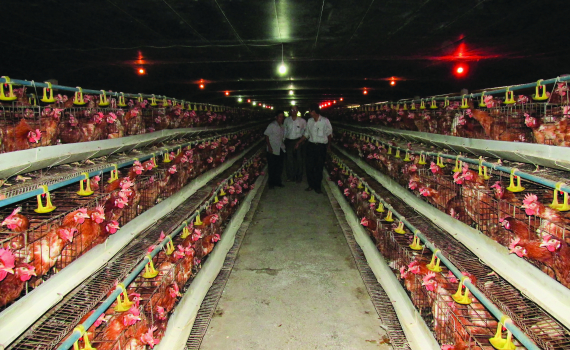[ad_1]

HCM CITY – Close co-operation between companies, co-operatives, farms, and households is needed to restructure the livestock industry, the Ministry of Agriculture and Rural Development has said.
Nguyễn Xuân Dương, acting general director of the ministry’s department of livestock production, told Nhân Dân (The People) newspaper that it was necessary to develop co-operation chains to promote the livestock sector with the four segments playing a key role.
With the establishment of the chains, all processes like production, processing and marketing would be well regulated, he said.
Farmers would produce based on demand from companies who would also provide them with information about supply in the market, designs, labels, standards, and exports markets, he explained.
As the chains are developed, modern technologies would be applied to cut costs and boost productivity, and profits would be shared between the various players to avoid price squeezes, he said.
Their co-operation would also help ensure food hygiene, he said.
According to the department, the ministry would this year review implementation of the 2008-19 National Livestock Strategy.
In this strategy, the livestock industry would be restructured with the breeding of cattle, sheep and goats developed to reduce the scale of pig breeding.
The areas for breeding will also be changed, with the pressure on the Hồng (Red) River Delta and south-eastern region eased, according to the department.
Breeding areas will be developed in the central and Tây Nguyên (Central Highlands) regions, which are highly suitable for raising cattle and poultry.
With the restructure, exports are expected to expand. The export market has great potential with many major companies like CP Group, De Heus, Hùng Nhơn, Ba Huân, and Trại Việt involved in it.
The department forecast exports of livestock and dairy products to strongly develop from 2020 onwards.
Restructuring the livestock industry has become necessary since it has been severely hit by African swine fever, which has killed three million or 10 per cent of the country’s pigs.
But thanks to good preparation and timely solutions, the pressure on the industry has eased, and there is enough food to supply the domestic and export markets.
The solutions include increasing supply of alternative meats like poultry and cattle and seafood. Pig herds are being raised at places not affected by the disease.
Measures to support pig farmers have also been taken by authorities. — VNS
[ad_2]
Source link
